I have been photographing with Nikon for almost the entire time I have been doing travel or, more recently, night photography. When I purchased a Pentax K-1, some photographers raised eyebrows.
Why would I purchase a 2016 camera years after it’s been released?
And why Pentax, a brand that has been more and more subjugated to the margins since they steadfastly refuse to embrace mirrorless technology?
There are seven reasons I embraced the Pentax K-1. Let’s go over some of them.
Image quality
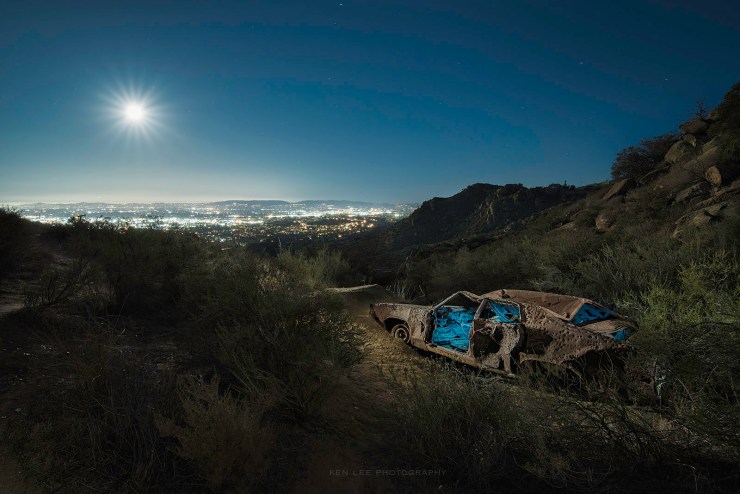
You can read about the specs. The large 36.6 megapixel full-frame CMOS sensor with 14-bit image processor earned a high overall sensor score of 96 — no small feat.
More than this, however, were the RAW files that I was seeing from friends who were using this. There was a beauty in the way it rendered the images, including a palpable openness. I had worked with a Nikon D850, one of the greatest DSLRs ever made, and these images looked just about as good as those.
Further, the low-light capability of this was astounding. I knew several people who had used a K-1, including Hal Mitzenmacher, Timothy Little and Mike Cooper. Their night photos looked fantastic.
And according to DXOMARK, the K-1 achieved a greater dynamic range than the Nikon D810 and Sony a7R between ISO 100-800, and excellent dynamic range up through ISO 3200. It also scored higher than the Nikon D750 and Canon 6D in all categories.
But again, I kept coming back to that openness. Sure, this wasn’t very scientific, but there was a naturalness and beauty to the RAW files that I couldn’t shake.
Cost
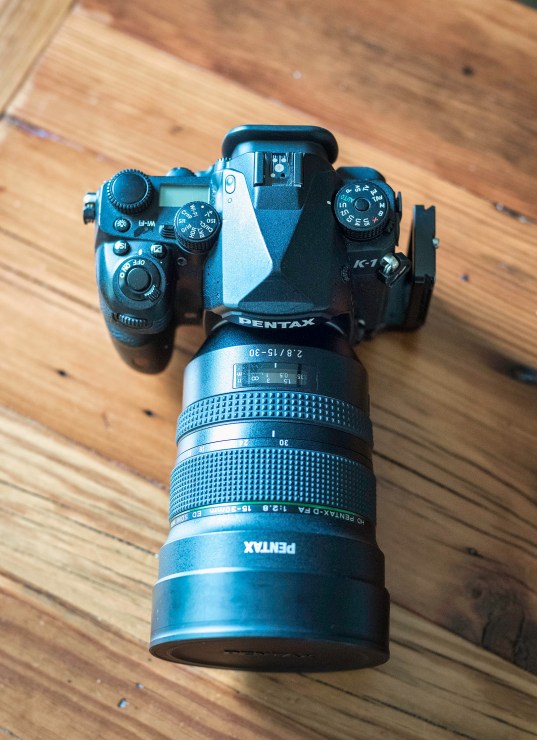
I’m on a budget, so cost was definitely a factor. Given its broad feature set, much of which was made with night photographers in mind, I was stunned that this full-frame wonder sold for only $1800 retail.
More than that, I was able to pick up a used body for only $880. There was no way I could say no to that. Where was I going to get a camera this good for under $1000?
Features
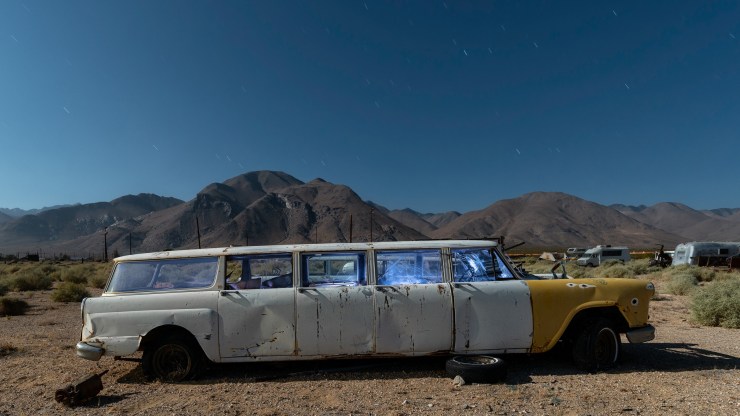
For a full-frame camera costing only $1800, I was surprised at the feature set. Focus peaking, five-axis in-body image stabilization, two card slots and more.
Furthermore, there was a built-in time-lapse mode for in-camera stacking.
What also caught my eye, quite literally, was the gorgeous LCD monitor. Images are sharp, as Pentax uses a 3.2-inch monitor with a resolution of 1,036,800 dots (345,600px). And it also has a flexible tilt-type monitor.
Features for night photographers
The K-1 has a number of features for night photographers rarely if ever found on other full-frame cameras.
Body illumination
The K-1 offers LED lights that illuminate various parts of the camera body by pressing a button. This is perfect for night photographers. A small light illuminates the lens mount, while several more illuminate the rear buttons when the screen is pulled away from the body.
Astrotracer

For many night photographers and astrophotographers, an Astrotracer alone might be enough to warrant the purchase of a K-1. But what is it?
An Astrotracer is basically an in-camera star tracker. This allows night photographers to shoot longer exposures without star trailing and without using an equatorial mount or tracker.
The Astrotracer shifts the camera’s image sensor in synchronization with the movement of celestial bodies. It does this by putting the camera’s built-in GPS and sensor stabilization system to further use.
This in-camera star tracker allows the photographer to use much lower ISO and achieve more accurate color rendering of the stars. Furthermore, it saves you from having to purchase and haul an equatorial mount, which can cost anywhere from $300 to $1000 and weigh 2.5-3 pounds.
Night Vision LCD
This function provides a red-lighted monitor display to preserve night vision. I was rather excited about this feature. In practice, however, I found myself satisfied with simply turning the monitor brightness down to its lowest level, which seemed to work. Also, I found it difficult to see what was going on when using Live View.
Dust, mud, running water? No problem!
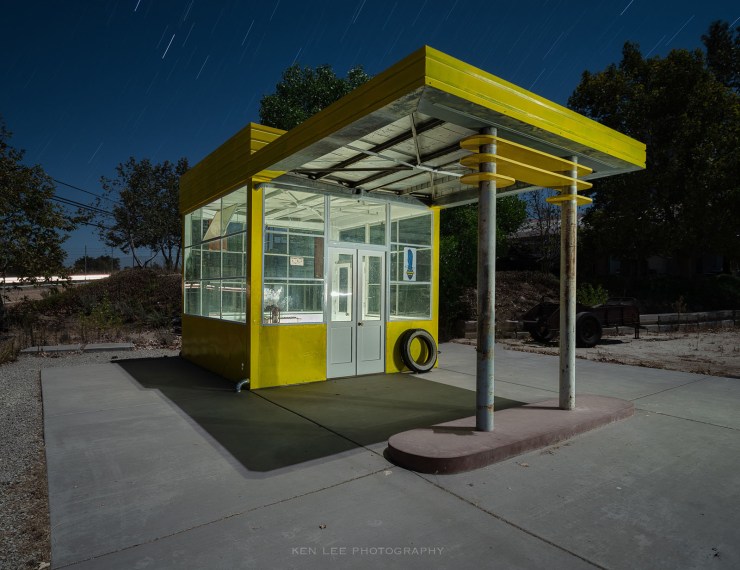
Pentax has quite a reputation for robust cameras. In 2012, Alex Jansen piled sand on his Pentax cameras to demonstrate their resistance to dust. He then rinsed them off by running them off in the shower.
The Pentax K-1 was similarly tested by Studient Richard by smearing mud over the outside, then cleaning it off under a faucet.
In both tests, the cameras were fully functional. I have yet to see weather sealing on any camera that even remotely compares to this.
Feels great in my hands
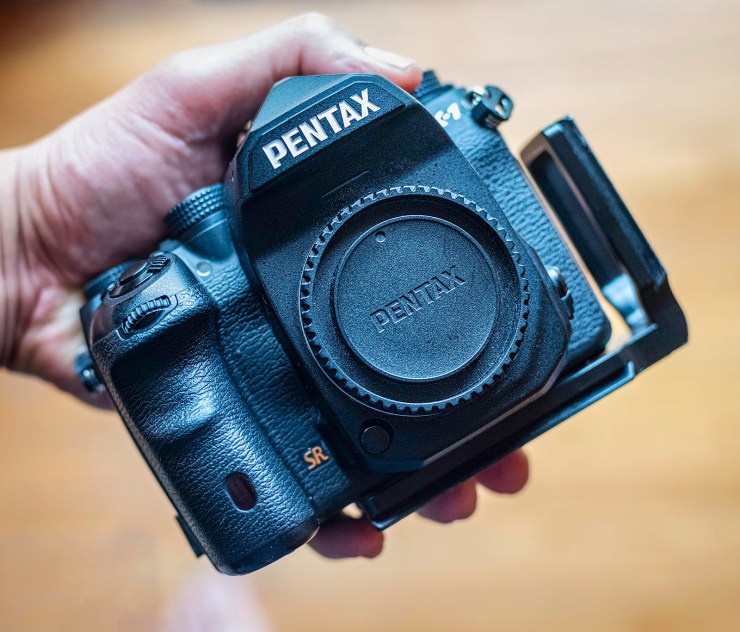
This is admittedly subjective. I like large cameras. Then again, I have large hands. The K-1 is a heavy camera. It weighs in at 2.23 pounds. When you pack in this amount of features and robust weather sealing, this is what you get. This is not one of those tiny little Olympus or Sony cameras.
That said, since I am a night photographer, my camera is on the tripod most of the time. Consequently, the weight doesn’t matter so much. And given the dust storms in the Mojave Desert or the salt spray of the Pacific coast, I’ll take that extra weather sealing, thank you very much.
A wide range of lens options
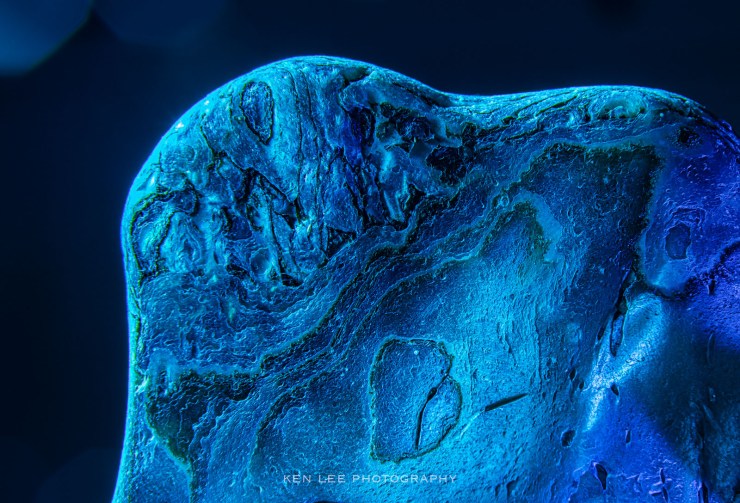
The Pentax K-mount, sometimes referred to as “PK-mount,” has been used since 1975. This means that there’s quite a few choices of lenses out there. This includes older legacy lenses, which you can pick up on eBay for a smile. Indeed, one photographer couldn’t give away his 100mm macro lens. I just paid for shipping. I purchased a 50mm f/4 macro lens for just a few dollars on eBay. This is in addition to other lenses such as the 15-30mm f/2.8 lens — made by Tamron for Pentax — which is one of the finest ultra wide-angle lenses today, and numerous other choices.
Is the choice as wide as Canon or Nikon? No. Is it still quite broad with plenty of deals? Absolutely.
Great features for an even better price
As you can see, the Pentax K-1 packs a lot of features for any camera. But it’s an absurd amount of features for a camera that lists for $1800. And, well, even more if you can get it used for $880!
I don’t personally care about brand names. I doubt Pentax will go belly up any time soon, as they are owned by Ricoh. But if they did, so what? That doesn’t stop me from continuing to use my camera.
I’m not wedded to brand names. I don’t really care if it’s Pentax, Nikon, Canon, Sony, Olympus, Leica, Fuji or anything else. I only care that the camera fits my needs. And the Pentax K-1 does so in a big way. That it does so at such an attractive price point is the cherry on top.
Tell your story with the second annual Visual Storytelling Conference!
Experience four days of interactive, online training sessions featuring a range of educational content with experienced photographers and content creators. This free event kicks off with a series of technical boot camps to build essential skills, followed by live, online sessions on photography, video, business and social media. Join live from March 10-13, 2022!
